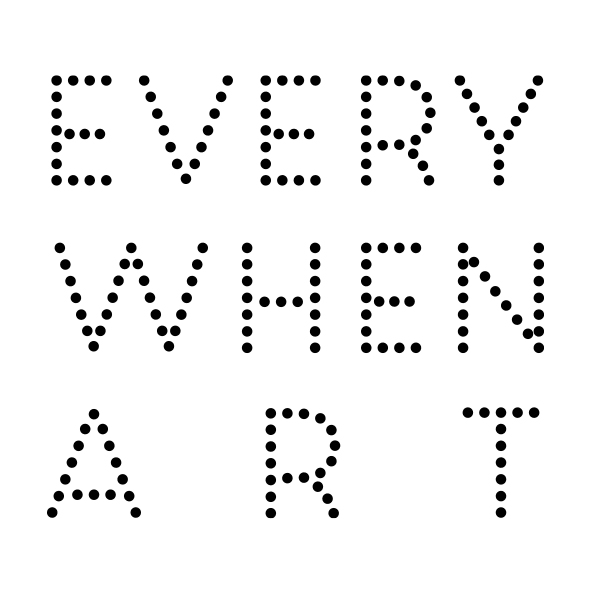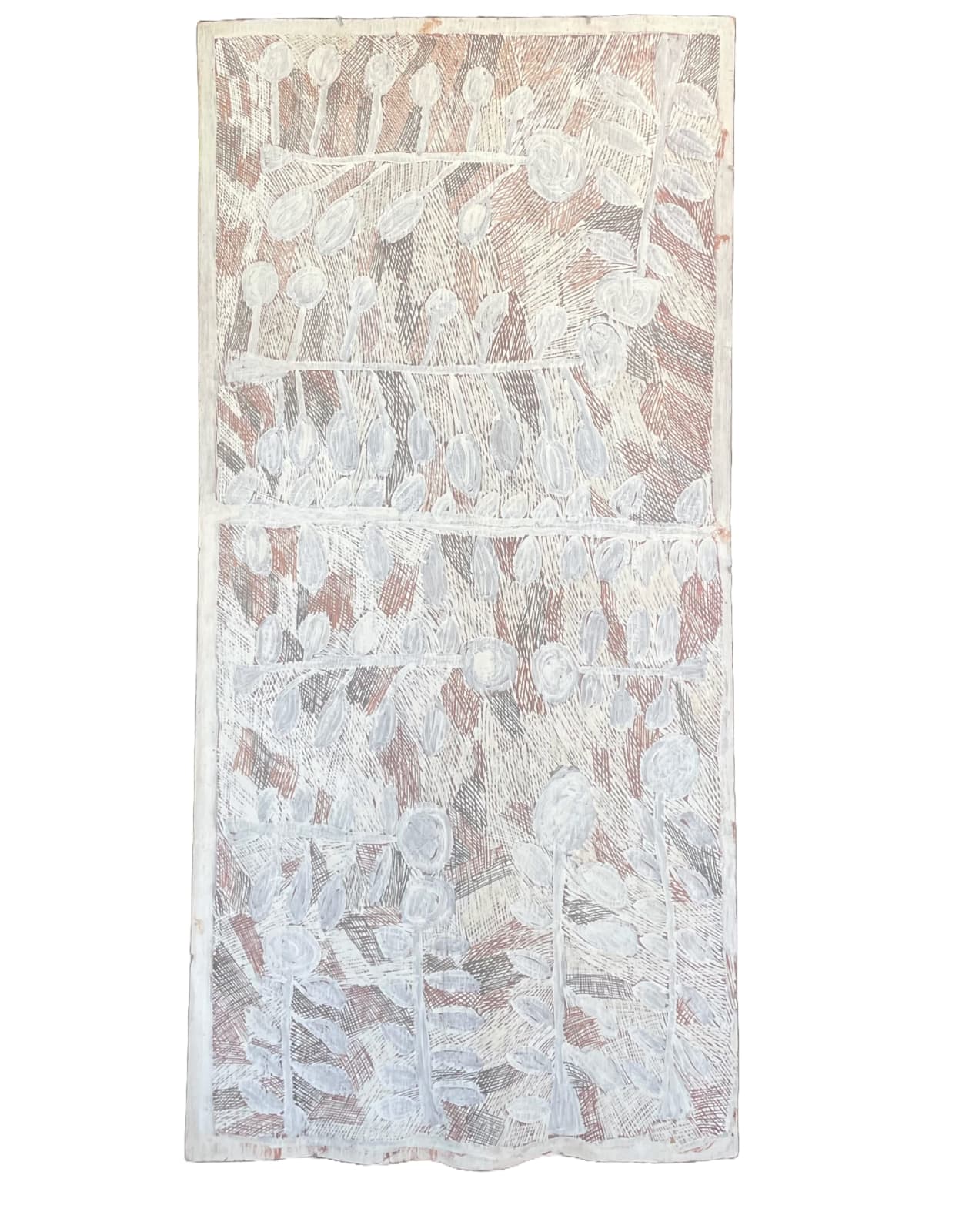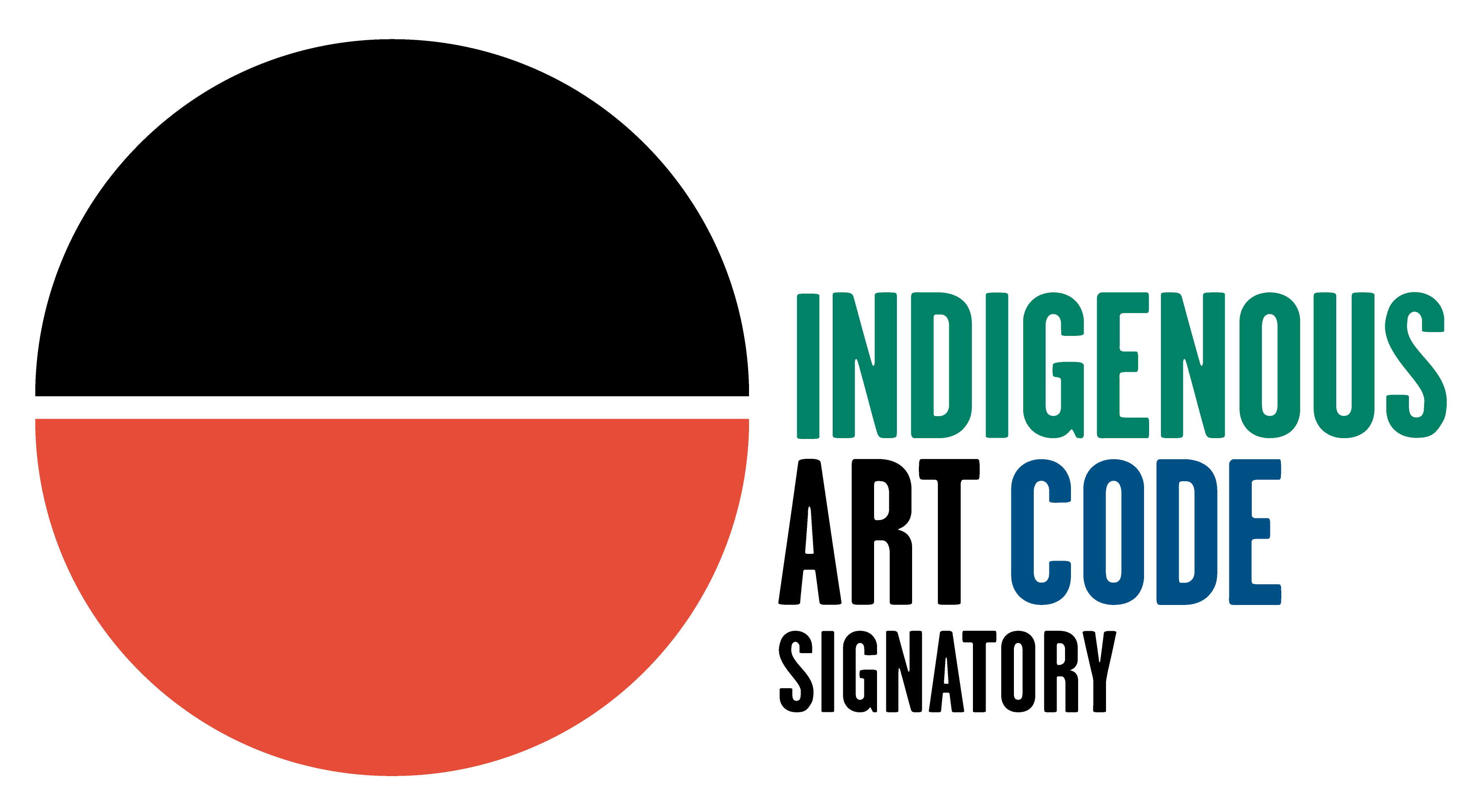Nyapanyapa Yunupingu
Nyapanyapa's work has been more valued for the spontanaeity and texture of her hand. She expressed her capacity to live in the moment in the freeness of her mark making. There is no calculation or even regard for the audience in her renditions. Their final appearance is almost random. They are an expression of the movements of her hand as they happen to have taken place on that particular day.
In early 2008 she made a dramatic departure from the previous conventions of Yolngu art. The grammatic tense which Yolngu sing/paint/discuss the creation forces that shape their world is unknown to non-indigenous. Sometimes simplified as the 'Dreaming'' in English, it conveys a temporal union between prehistory, the present and the distant future. All of these time zones are happening simultaneously. This is the tense in which the creation events happened/are happening/will happen. All Yolngu art, until this point, was either sacred and in this tense or decorative. Decorative paintings were expressly 'ordinary' and without meaning or story of any kind.
Nyapanyapa Yunupingu was quite remarkable. She was perhaps the artist of the region most remote from the market she created for. In this sense her art is really quite pure for it is without any consideration or desire by here to have understood what happened beyond point of sale to her art centre.
She was a widow, - a wife of the late Djapu clan leader Djiriny Mununggurr who died in 1977. Her early life was spent with her father Munggurrawuy Yunupingu, a renowned artist and father of two Australians of the Year (her brothers Galarrwuy and Mandawuy). She was a ceremonial woman and a battler without material possession. She was a classificatory sister to star artist Gulumbu and travelled once to Adelaide for the 2005 Festival with her kin for a critically acclaimed crying performance in honour of her deceased sister and senior artist Gaymala.
Mrs N Yunupingu was small in stature and had been quite deaf for a long time. She was badly gored by a buffalo in the 1970s at Mutpi near Garrthalala. This required her medical evacuation to Darwin which was rare in those days.
Although childless she helped to raise many children and was almost always in company with one of her sisters, usually Barrupu but sometimes Djakangu. She embodied uncomplaining humble persistence in her gentle subsistence lifestyle.
Nyapanyapa's prints, especially her whacky and boldly coloured screen prints were a hit for several decade, with many editions in numerous exhibitions around the world . She started to paint on bark in 2007. Shortly after this she was exhibited in the Telstra Award and accepted to hold her first solo exhibition at Roslyn Oxley9 Gallery in September 2008.
Once prompted to treat the story of her almost fatal goring by a Buffalo in the seventies, Nyapanyapa threw these conventions over and unleashed a unique set of personal narrative paintings revolving around her own experiences. This subjective, individualistic and linear narrative construction was totally out of step with all previous Yolngu art.
The first of these was so surprising it was entered in the 2008 Telstra NATSIAA Award. To bolster the chances of preselection, an explanatory video was produced by the newly founded digital archive and studio attached to Buku-Larrnggay Mulka Centre, The Mulka Project. As it happened the video was completed after the bark had been accepted but the entry was varied to include the bark and video as a 3D installation.
In the midst of this evolving story a visit from Roslyn Oxley planted the seed of a potential Nyapanyapa exhibition and throughout the first half of 2008 Nyapanyapa, often accompanied by her sister Barrupu, painted a succession of almost twenty narrative barks in the courtyard of Buku-Larrnggay Mulka Centre. Her labours so regular they were only interrupted by ceremony.
This work shows just the empty forest. Following a nightmare on the night of her 2008 Telstra win she vowed not to paint the buffalo anymore and did not, thereafter. The trees depicted here are fruit trees like Larrani or Bush Apple.
Provenance
Buku-Larrnggay MulkaMcCulloch Collection
SIGN UP TO OUR MAILING LIST FOR ALL THE NEWS
* denotes required fields
We will process the personal data you have supplied in accordance with our privacy policy (available on request). You can unsubscribe or change your preferences at any time by clicking the link in our emails.


